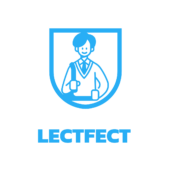Learning is a skill we all use every day. Knowing how to learn can make a big difference in school, work, or life. There are many ways to learn, and each person has their style. This article will look at different learning strategies that can help you or anyone else learn better.
Visual Learning
Visual learners gain knowledge best through sight. They understand and remember things by seeing them. Charts, graphs, and images can help these learners grasp new ideas.
For example, if you’re learning about online casino bonuses, a table showing the different types of recommended online casino bonuses and how they work can be very helpful. Flashcards with pictures are also great tools. They allow visual learners to connect words and images, making recall easier.
Auditory Learning
Auditory learners excel when they hear information. They learn best through listening to lectures, discussions, or audio recordings. These learners often benefit from repeating what they hear.
To help auditory learners, teachers can use podcasts or audiobooks. Group discussions also allow them to process and understand new concepts. Singing or rhyming can also make learning fun and memorable for them.
Kinesthetic Learning
Kinesthetic learners learn by doing. They need to be active to grasp new ideas. This type of learner enjoys hands-on activities, like experiments or role-playing.

For instance, in a science class, rather than just reading about chemical reactions, a kinesthetic learner would benefit from experimenting themselves. Building models or using tools can help these learners connect theory to practice, making the learning experience more engaging.
Reading or Writing Learning
Reading and writing learners get the most from written words. They thrive on reading texts and taking notes. This group often excels in traditional classroom settings.
To support these learners, teachers can provide books, articles, and written assignments. Encouraging them to summarise what they read in their own words can deepen their understanding. Creating outlines or journals can also help reinforce what they learn.
Social Learning
Social learners gain knowledge through interaction. They enjoy group work and discussions. Learning with peers can provide different perspectives and enhance understanding.
In a classroom, social learners can benefit from study groups or team projects. This strategy allows them to share ideas and learn from one another. Role-playing and debates can also engage social learners, making the process more dynamic.
Solitary Learning
Contrary to social learners, solitary learners prefer working alone. They tend to focus better in quiet spaces and enjoy self-study. This type of learner benefits from having time to think and reflect.
To support solitary learners, it’s helpful to provide resources they can explore at their own pace. Online courses or books allow them to dive deep into subjects without distractions. Setting personal goals can also motivate them to keep learning.
Experiential Learning
Experiential learning emphasises real-world experiences. It involves learning through action and reflection. This strategy is great for applying knowledge in practical situations.

For example, internships or volunteer work can provide valuable learning opportunities. These experiences allow learners to gain skills while being immersed in real-life scenarios. Reflecting on what they learn during these experiences can help deepen their understanding.
Problem-based Learning
Problem-based learning focuses on solving real-world issues. It encourages critical thinking and allows learners to apply their knowledge. This strategy often involves working in groups to find solutions. In this approach, students might be presented with a problem and asked to research and analyse it. This method not only helps them learn content but also fosters collaboration and creative thinking.
By exploring and applying these strategies, you can improve your ability to learn and retain information. Remember, similar to choosing from recommended online casino bonuses, the goal is to find what works best for you, making learning a more fun and effective process.

